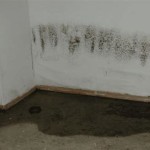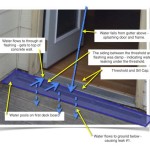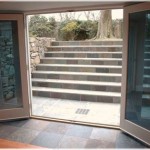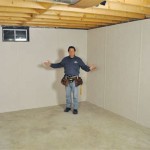How to Get Rid of Mold Smell From Basement
A musty or earthy odor emanating from a basement often indicates the presence of mold. Mold growth not only produces an unpleasant smell but can also pose health risks and compromise the structural integrity of a building. Addressing a mold smell in a basement requires identifying the source of the mold, eliminating the moisture that sustains it, and thoroughly cleaning affected areas. This article details a comprehensive approach to eradicating mold smells from basements.
Identifying the Source of the Mold Smell
The first step in eliminating a mold smell is to pinpoint the origin of the mold growth. Mold thrives in damp, dark, and poorly ventilated environments. Basements, due to their location below ground level, are particularly susceptible to moisture problems stemming from groundwater, leaky pipes, condensation, or inadequate ventilation. A systematic inspection is necessary to locate the source of the odor. Start by visually examining the basement for visible signs of mold, which often appears as discolored patches (green, black, brown, or white) on walls, floors, ceilings, or stored items. Areas prone to moisture accumulation, such as around windows, pipes, and cracks in the foundation, require close scrutiny.
Pay attention to the smell itself. A stronger odor in one area can indicate a localized source of mold growth. Check behind furniture, within storage boxes, and under carpets, as these areas often provide favorable conditions for mold to flourish. Furthermore, investigate potential sources of water entry, such as cracks in the foundation walls, leaking window wells, or faulty drainage systems. If the source of the mold is not immediately apparent, consider using a moisture meter to identify damp areas that may harbor hidden mold growth. A moisture meter can detect elevated moisture levels in building materials, even if there are no visible signs of mold.
In some cases, the mold may be hidden behind walls or ceilings. If the smell is persistent and the source cannot be easily identified, professional mold inspection services may be necessary. Mold inspectors use specialized equipment, such as infrared cameras, to detect hidden mold growth and can provide a comprehensive assessment of the problem.
Eliminating Moisture Sources
Addressing the underlying causes of moisture is crucial to prevent the recurrence of mold. Mold requires moisture to grow, so simply cleaning the mold without resolving the moisture problem will only provide a temporary solution. Common sources of basement moisture include:
*Leaks: Inspect pipes, plumbing fixtures, and the foundation for leaks. Repair any leaks promptly to prevent further water damage.
*Condensation: Reduce condensation by improving ventilation and insulation. Consider using a dehumidifier to lower humidity levels in the basement.
*Groundwater: Ensure proper drainage around the foundation to divert water away from the building. This may involve repairing or installing gutters, downspouts, and French drains.
*Poor Ventilation: Improve air circulation in the basement by opening windows (when weather permits) or installing exhaust fans. A dehumidifier can also help to improve ventilation and reduce moisture.
Addressing specific moisture issues requires tailored solutions. For example, if groundwater seepage is a problem, waterproofing the basement walls may be necessary. This can involve applying a waterproof sealant to the interior walls or installing a drainage system to divert water away from the foundation. If condensation is a concern, insulating cold surfaces, such as pipes and walls, can help to reduce moisture buildup. Ensure that all ventilation systems are functioning properly and that air vents are not blocked by furniture or other items. Regular maintenance of these systems prevents future moisture problems.
Controlling humidity levels is paramount in preventing mold growth. Ideal humidity levels should be maintained between 30% and 50%. A dehumidifier can effectively remove excess moisture from the air and help to prevent mold from returning. Regularly check and empty the dehumidifier's water collection tank to ensure it is functioning properly. Additionally, consider using moisture-absorbing products, such as silica gel packets, in areas prone to moisture accumulation.
Cleaning and Remediation
Once the moisture source has been addressed, the next step is to clean and remediate the affected areas. The specific cleaning methods depend on the extent of the mold growth and the type of materials affected. For small areas of mold growth (less than 10 square feet), it is often possible to clean the mold yourself. However, for larger areas or if you have health concerns, it is best to hire a professional mold remediation service.
Cleaning Moldy Surfaces: Surfaces affected by mold can be cleaned with a variety of solutions. One common option is a mixture of bleach and water (1 part bleach to 10 parts water). However, bleach should not be used on porous materials, such as wood or drywall, as it can simply bleach the surface without killing the mold. For porous materials, a specialized mold cleaner or a mixture of vinegar and water can be used. Always wear appropriate personal protective equipment (PPE) during the cleaning process, including gloves, a mask or respirator, and eye protection. Ensure adequate ventilation in the area to prevent the inhalation of mold spores or cleaning chemicals.
Apply the cleaning solution to the affected surface and scrub thoroughly with a brush or sponge. Allow the solution to sit for a few minutes before wiping it away with a clean cloth. Rinse the surface with clean water and allow it to dry completely. To prevent mold from returning, consider applying a mold-resistant paint or sealant to the cleaned surface. This will help to create a barrier against moisture and inhibit future mold growth.
Cleaning Moldy Items: Items that have been affected by mold should be cleaned or discarded, depending on the extent of the damage. Non-porous items, such as plastic containers or metal objects, can be cleaned with a bleach solution. Porous items, such as carpets, upholstery, or clothing, may be more difficult to clean and may need to be professionally cleaned or discarded. When cleaning moldy items, take care to prevent the spread of mold spores to other areas of the basement. Seal the items in plastic bags before removing them from the area to minimize the release of spores into the air.
Professional Mold Remediation: For extensive mold growth or if you are unsure about the cleaning process, it is best to hire a professional mold remediation service. Mold remediation professionals have the expertise and equipment to safely and effectively remove mold from your basement. They will also address the underlying causes of the mold growth and take steps to prevent it from returning. Professional mold remediation typically involves containment of the affected area, removal of moldy materials, cleaning of the area with antimicrobial solutions, and application of mold-resistant coatings. They will also dispose of the moldy materials properly and ensure that the area is thoroughly dry before releasing it back into use.
Following mold remediation, preventative measures are essential. These measures include regular inspection and maintenance of the basement to identify and address any potential moisture problems promptly. Ensuring proper ventilation, maintaining low humidity levels, and promptly repairing any leaks or water damage will help to prevent mold from returning and keep the basement free from musty odors.

How To Get Rid Of Mold And Mildew Smell In Your Basement Aircare

Get Rid Of Musty Odor In Basement Servicemaster Restore

Musty Basement Odor Removal Firestone Restoration Ottawa

Eliminate Musty Smell In Basement Homesteading Simple Self Sufficient Off The Grid Com

Musty Smell In The Basement 4 Steps To Freshness Bob Vila

How To Get Rid Of Musty Smell In Basement Keep Away

How To Get Rid Of Musty Smell In Basement Wet Basements

How To Get Rid Of Basement Odor 10 Easy Methods

Musty Smell In The Basement 4 Steps To Freshness Bob Vila

8 Steps To Get Rid Of Musty Basement Smells Baker S Waterproofing
Related Posts







